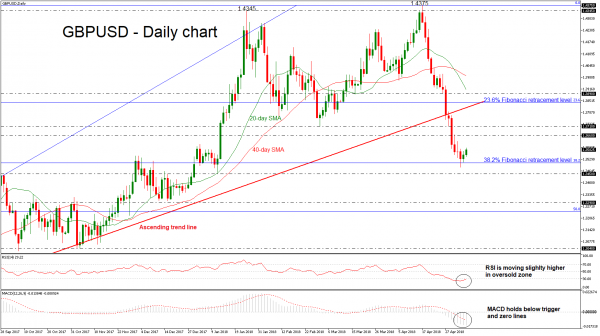GBPUSD has headed sharply lower over the last three weeks after the strong bounce off the 1.4375 resistance level. The pair challenged a fresh almost four-month low of 1.3485 achieved last Friday near the 38.2% Fibonacci retracement level of the upleg from 1.2100 to 1.4375. The pair failed to end a day below the aforementioned obstacle and is paring some of the losses.
From the technical point of view, in the daily timeframe, the Relative Strength Index (RSI) is slightly pointing to the upside but remains in the oversold zone, while the MACD oscillator is losing bearish momentum in the negative territory, indicating that a bullish correction is possible. Additionally, the 20- and 40-simple moving average (SMAs) posted a bearish crossover the preceding week, confirming the bearish pressure.
If price action remains above the 38.2% Fibonacci of 1.3510, there is scope to test the 1.3660 – 1.3710 resistance area. Clearing this key zone would see additional gains towards the 23.6% Fibonacci mark of 1.3840. Rising above it would see prices re-test the 1.3890 barrier.
If 1.3510 support fails, then the focus would turn to the downside again towards the next immediate support of 1.3450. Breaching this region would increase downside risks and bring about a deeper reversal of the medium-term outlook and touching the 1.3290 support hurdle.
Overall, GBPUSD has been negative after the penetration of the ascending trend line, which had been holding since March 2017.
















